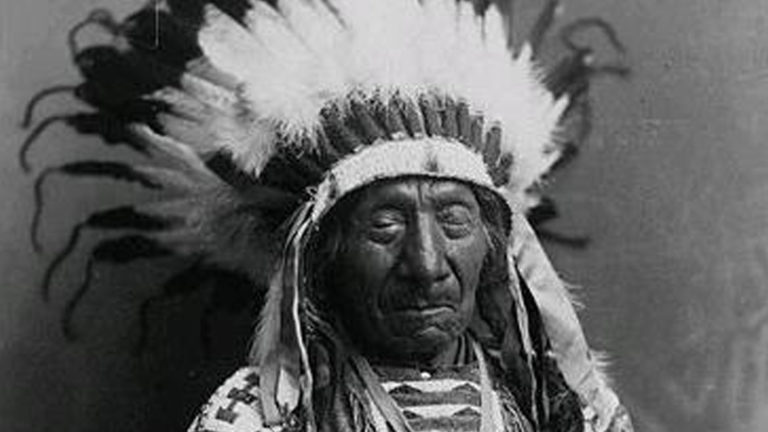Under Red Cloud, the Indians isolated the forts and harassed supply columns, making it impossible for the U.S. military to maintain a presence. The U.S. acknowledged defeat and sued for peace. This is the only time any Indian leader defeated the United States in a war. Red Cloud did not go to Fort Laramie to discuss peace until after he had sent word that he would first “make his winter’s meat.”
Red Cloud signed the second Treaty of Fort Laramie in 1868. In exchange for annuities and other benefits as outlined in the treaty, the Sioux agreed to cease hostilities and locate to a reservation north of the state of Nebraska and west of the Missouri River. The Treaty of 1868 was a complicated document that the Indians found difficult. There is evidence that most participants did not fully understand the treaty, nor ever intended to abide by it. Red Cloud had no intention of living north of the Platte Valley, but signed the treaty because he thought it would make it possible for him to return to the area around Fort Laramie.
Misunderstandings continued and Red Cloud made four trips to Washington, D.C. to meet with President Grant in the 1870s. In spite of his many difficulties with the government, Red Cloud kept the peace he had agreed to at Fort Laramie in 1868. He recognized the folly of going to war, but he tried to win as many concessions as possible.
On his first trip, he visited New York City and Washington, speaking to thunderous applause before an overflow crowd at the Cooper Institute. Trips east provided Red Cloud with a powerful forum from which to criticize the government’s Indian policy, and he used it effectively in events covered by the press. His eloquence and flair for the dramatic, spoke even through interpreters.
Look at me. I was a warrior on this land where the sun rises, now I come from where the sun sets. Whose voice was first surrounded on this land – the red people with bows and arrows. The Great Father [President Grant] says he is good and kind to us. I can’t see it…
Honored by various reform groups, but a thorn in the side of those who were trying to carry out the government’s “peace policy,” Red Cloud was a central figure in the conflict between the army and the Interior Department over who should have authority over the Plains Indians. He resisted without force all efforts to locate his people away from the Platte Valley.
Whose voice was first sounded on this land? The voice of the red people who had but bows and arrows . . . What has been done in my country I did not want, did not ask for it; white people going through my country . . . When the white man comes in my country he leaves a trail of blood behind him. I have two mountains in that country—The Black Hills and the Big Horn Mountains. I want the great father to make no roads through them. I have told these things three times; now I have come here to tell them the fourth time.

